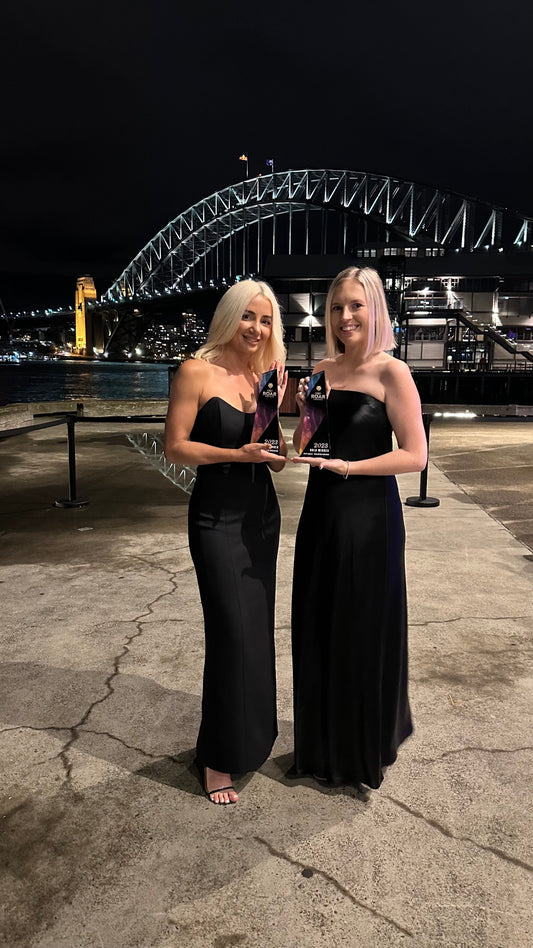As a business and marketing consultant, I’m constantly brainstorming new ways to put my clients on the map and help them gain visibility while building a loyal community and, of course, landing sales.
Without fail, one of the tried-and-true strategies I keep coming back to for both new and seasoned companies alike is email marketing. The power of a good email marketing strategy is immense — you’ve probably heard before that email boasts a higher ROI than any other form of digital marketing, a fact that I’m happy to report is true.
With that being said, email marketing — and specifically, email newsletters — only work if they’re actually good and engaging. An all-too-common mistake I see plenty of business owners make is sending out a boring newsletter with no real intention behind it because they think it’s what they should be doing. In reality, your marketing emails and regular newsletter need to be high-quality and valuable, just like the rest of the content you put out into the world.
If you’ve been considering taking on the task of incorporating an email newsletter into your email marketing strategy, read on for some of my top tips on how to write emails that people actually want to open and consume!
Not every form of marketing is right for every business owner. Before you jump right into creating an email newsletter, do a little research to determine if this is something your industry will even be interested in. Are there successful email newsletters that people like to subscribe to? What’s in them? Can you put your own spin on it and make this format work for your business?
You also need to think about what your overall goals for your email marketing strategy are. If you’re wanting to use email solely to sell a passive offer, you’d be better off sending a sales sequence than a newsletter. Conversely, a newsletter is probably the perfect thing if you’re looking to nurture your existing subscribers while directing them to take a desired action.
Like all content, your newsletter should lead with value first and foremost. Your subscribers don’t always want to be sold to, and if you only ever pop into their inbox to promote your products, you’re going to lose them. Instead, focus on sending your subscribers educational, relevant information related to your business. A simple call-to-action at the end of each email is all you need if you do want them to take a specific promotional action.
Nowadays, in the age of 24/7 spam and marketing emails, people are jaded when it comes to giving their email address away. To ensure your customers know that your newsletter is more than just a way for you to sell your products, break down exactly what they can expect to see and how often they’ll be hearing from you on the newsletter opt-in page.
The biggest obstacle to overcome in the email marketing game is making sure your emails don’t get banished to the “Trash” folder before your subscriber even opens them. So, your job is simple — get your customers to click on your emails through creative, engaging subject lines that capture their interest from first glance! Here are a few email subject line best practices to adhere to:
A newsletter features many different sections of copy and occasionally, images as well. Because of this, you want to avoid cluttering your newsletter with an overwhelming number of components. A great way to do this is to prioritise a simple, minimalistic design with tons of white space while keeping your copy as concise as possible without sacrificing on personality. You don’t need a ton of words here, as you want to send your readers elsewhere (your website or blog, for instance) to actually consume your longer form content. White space helps visually alleviate the cluttered feel, and on mobile, makes it much easier for people to click the right link.
If you’ve ever been on the other end of a tricky unsubscribing process, you know how annoying it is. Don’t make your subscribers go to extreme lengths to unsubscribe from your newsletter. Of course you want to retain subscribers, but having a clear unsubscribe process will overall keep your list healthy…in addition to your reputation!
- Feature a recent blog post.
- Include a free resource or guide.
- Share your favorite quote of the week.
- Inform your subscribers of any upcoming or current promotions/sales.
- Host a giveaway or contest.
- Show off user-generated content that features your products.
- Share testimonials and reviews.
- Include a weekly business tip.
- Make company announcements.
I hope this blog post helps you tackle the sometimes-daunting task of creating a regular newsletter. It may seem tricky at first, but over time you’ll learn how to put together a newsletter that your subscribers are delighted by and look forward to every week.
If you’re interested in seeing how I approach my business newsletter, I would love for you to join the list and become a member of my email community! You’ll receive a weekly newsletter and the occasional value email featuring a helpful tip or trick. Click here to get on the list.
As an expert business consultant, I can also help you get started with email marketing and newsletters on the right foot. For more help figuring out how to move forward, click here to learn more about scheduling a 90 minute intensive with me.





